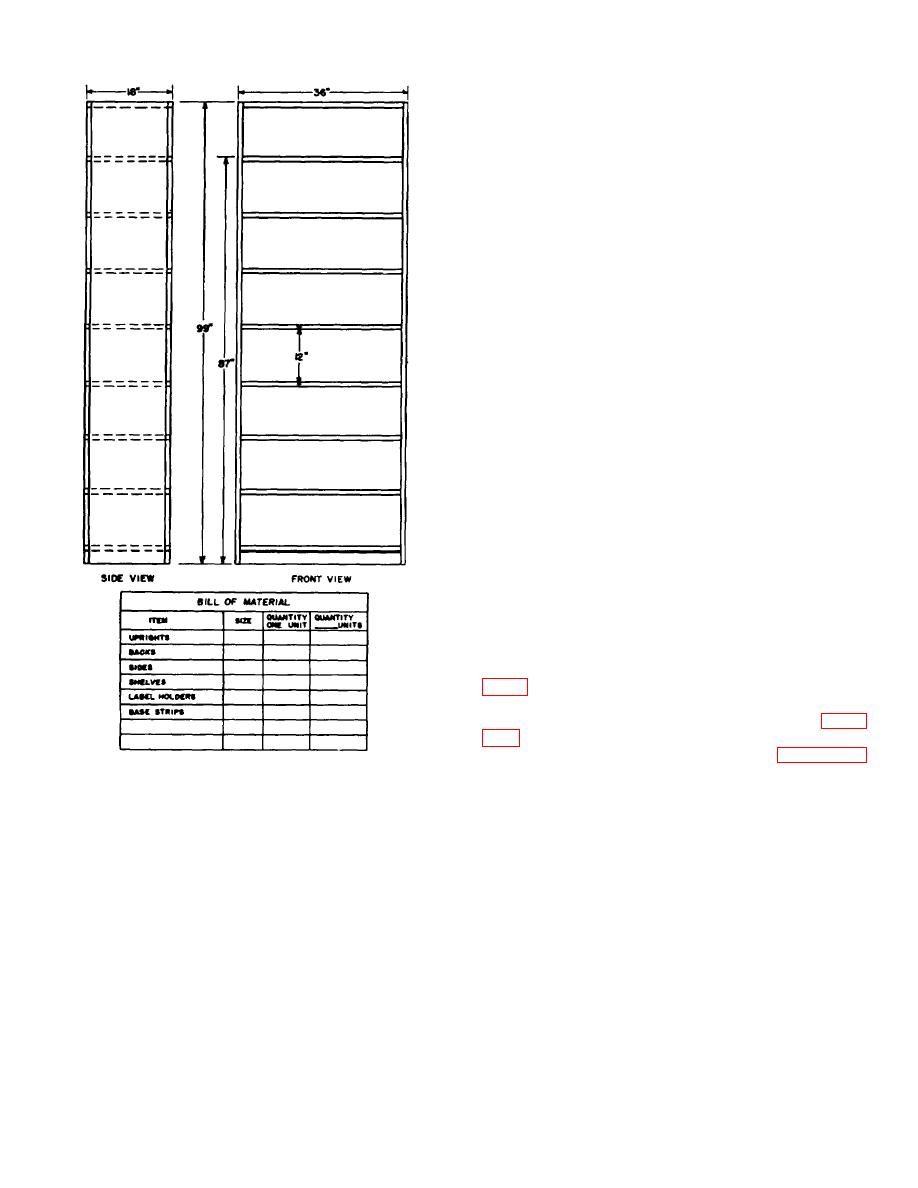 |
|||
|
|
|||
|
Page Title:
Figure 2-32. Bin Shelving Plan Sheet |
|
||
| ||||||||||
|
|
 TM 38-400/NAVSUP PUB 572/AFMAN 23-210 MCO 4450.14/DLAM 4145.12
operation should be considered, and when increased
operating costs offset the savings, bins and shelving
should not be double decked.
When mezzanine
platforms are used, they should have open-type metal
floors which will not obstruct the effective use of
sprinkler systems.
(3) A
determination
of
storage
aid
requirements should be made prior to actual
development of stock layout planographs. Appropriate
adjustment of these requirements should be
accomplished at any time it is found that increased
space utilization can be achieved. Typical storage aids
are bins, shelving, shelf boxes, and various types of
racks.
(a) Shelf boxes can provide a flexible
arrangement for efficient use of shelf space. The shelf
boxes provide retainer walls on four sides of the
material being stored thereby eliminating stock sloping
which wastes usable cube space. Shelf boxes can also
be "double stacked" on a bin shelf to facilitate use of
cubic space. When relocation of the item is required, it
can be accomplished by moving the shelf box with
contents. The result is reduced handling of loose stock.
Basic types of shelf boxes are-
1
Small, one compartment.
2
Small, two compartments.
3
Large, metal, one compartment.
4
Large, corrugated.
A complete study of shelf boxes has been made to
determine the sizes which provide the greatest
flexibility.
The standard small one and two
compartment shelf boxes are 41/2 inches high, 51/2
inches wide, and 1 foot 5 inches deep as shown in figure
box is 103/8 inches high, 111/4 inches wide, and 171/2
inches deep as shown in figure 234. As shown in figure
high, 10 inches wide, and 16 inches deep. Figure 2-36
Figure 2-32. Bin Shelving Plan Sheet
shows a typical bin shelf box arrangement. The shelf
space sizes 1 through 6 indicate the number of standard
(1) The utilization of 75 percent of space
boxes required to house the items; size 3X indicates one
within bin and shelf openings, determined on the stock
complete shelf without boxes; size 6X indicates two
level to be carried, will be considered adequate. Losses
complete shelves without boxes. Smaller items are
in cube beyond this figure indicate the need for
stored in small 1 or 2 compartment shelf boxes which fit
readjusting the size of bin or shelf opening.
12 to the shelf. These small compartments can be
(2) Double decking of bins and shelving, if
further divided to accommodate small items (e.g., nuts,
practicable, will result in better utilization of storage
bolts, etc.).
space. However, other factors involving economy of
2-31
|
|
Privacy Statement - Press Release - Copyright Information. - Contact Us |